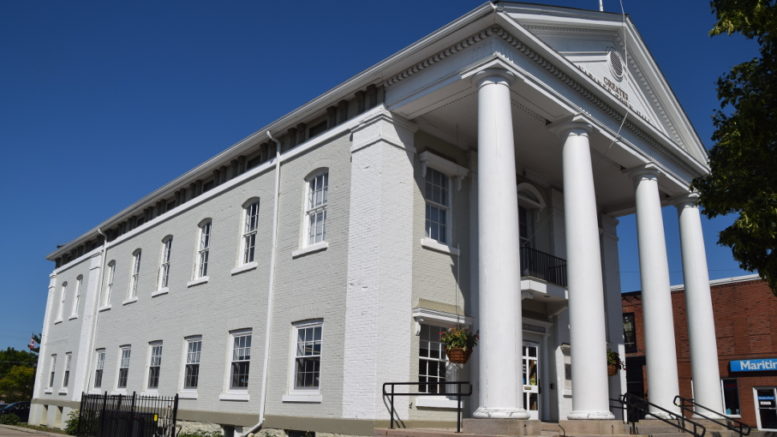Adam Prudhomme
Beaver Staff
Round 1 of Greater Napanee’s 2018 budget process was held Monday, with staff recommending a 1.9-per-cent increase to the utilities tax rate.
Council voted to accept the draft, with a bylaw on the increase expected to be passed at the Jan. 9 meeting.
During Tuesday’s meeting, staff told council that the 2018 utilities budget is debt free, but also provides necessary finances to undertake substantial capital work, such as the next phase of the Dundas Street construction project.
According to staff, a one-per- cent increase would represent $54,480 of additional revenue. The increase was proposed to supplement revenue with capital and maintenance reserve surplus to help offset future spending for in ground works and the Water Pollution Control Plant.
Prior to proposing next year’s budget, staff presented council with a look back at 2017, in comparison to neighbouring municipalities.
The numbers showed that Greater Napanee’s urban tax rate was $1,179 per $100,000 assessment while the urban was $1,311 per $100,000 assessment, which ranked second and ninth respectively. They were compared with the likes of Port Hope rural, Quinte West, Belleville rural, Kingston east and west, Stone Mills, Loyalist, Gananoque, Brockville and Cobourg.
“Our residential tax rates were very competitive, if you want to use that word,” said deputy CAO and treasurer Mark Day. “All things considered we are very reasonable. This is per assessment of $100,000. There could be municipalities that have higher assessments just due to location. The bigger urban centres, the same type of home might be worth more in Kingston, Belleville than it is in Napanee. In reality even if they have a lower rate, they may be paying more tax because the assessment is more.”
Day also suggested more growth in the commercial and industrial could help lessen the burden on residential ratepayers as well.
“It’s very similar to last year’s budget,” said Peter Dafoe, general manager of infrastructure services. “Both the 2017 and 2018 budget, the 2018 budget being proposed, we are dipping into capital and maintenance reserve charges to fund some substantial capital work. The part of the budget I was excited about was that since 2008 our user rates have been in a steady decline…Based on the average residential consumption right now, we expect the average residential bill in 2018 to be what it was in 2008. Ten years later they’re paying the same monthly bill. The only difference being that the consumption is lower, the rates are higher.”
Dafoe said home owners and businesses have caught onto conserving water.
“We are now debt free,” Dafoe added about the 2018 budget. “The ventures for the water treatment water storage plant is now paid in full.”
Still, staff recommend dipping into reserve because of the projects that are looming in the coming years.
“We’re looking at a few difficult years to get through where we’re spending a lot of money,” added Dafoe. “Which is why we’re proposing to dip into capital surplus as opposed to going after higher rate increases.”
With nearly $1.3 million stored in impost reserves, Dafoe says the surplus fund is at an all-time high.
“I’m glad you have put money away for the biggest projects,” said Mayor Gord Schermerhorn. “I hate to see us going into debt all the time. It’s nice to see that we’re debt free and putting money away for these projects.”
The next of four planned budget sessions is Feb. 22.

